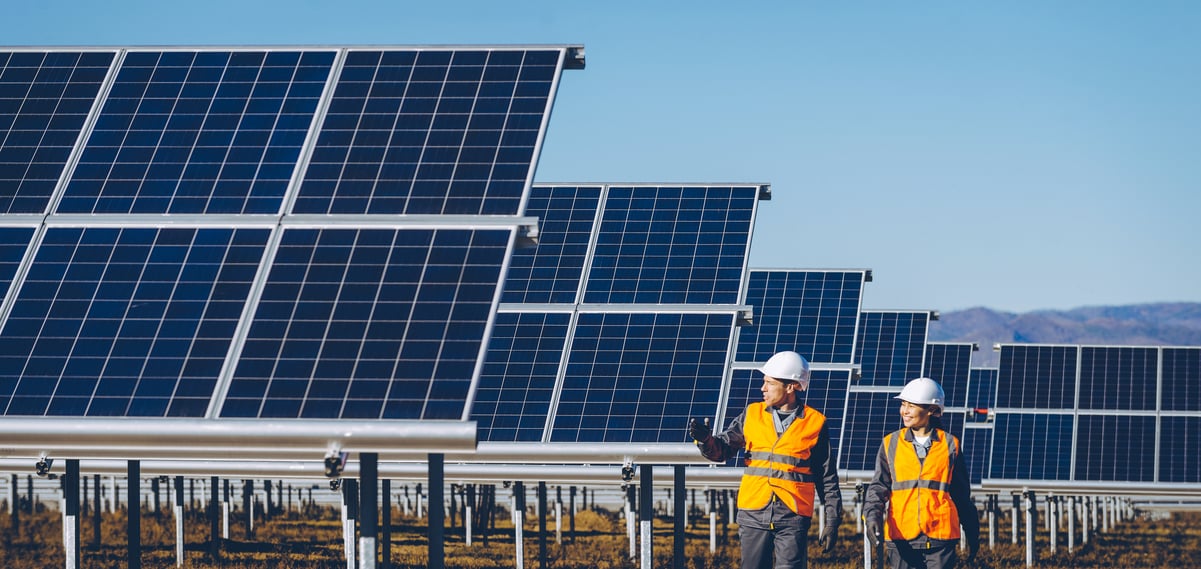There are a number of ways to invest in the energy industry today, from traditional fossil fuels to new technologies like wind and solar. And there are opportunities for investors throughout.
We asked three of our contributors for their favorite energy stock today and found a wide range of answers. Liberty Oilfield Services (LBRT 0.05%), Tellurian (TELL +0.00%), and First Solar (FSLR +1.05%) made the list, and there's a little something for everyone in these three stocks.

Image source: Getty Images.
Fracking for dollars
Rich Smith (Liberty Oilfield Services): I'll admit it: I'm not usually a big fan of energy companies, which in my experience have a tendency to report high profits unsupported by equally high free cash flow. That's not the case with an oil-field services company I recently came across, however -- Liberty -- which provides hydraulic fracturing services to oil and gas exploration and production companies in the continental United States.
With $99 million in trailing profits and a market cap of $1.7 billion, Liberty Oilfield Services sports an attractive price-to-earnings ratio of just 17. (That's attractive because, according to analysts polled by S&P Global Market Intelligence, Liberty is on pace to grow its earnings more than 60% over the next two years -- a compounded annual growth of better than 30%.)
And allaying my perhaps idiosyncratic concerns about the relationship between reported and cash profits, Liberty's trailing free cash flow number of $100 million almost precisely matches its reported net income under generally accepted accounting principles (GAAP).
Granted, Liberty isn't quite as cheap as it seems at first blush. The company carries about $160 million in net debt on its balance sheet. But just this month, Liberty announced a secondary public offering of shares calculated to raise some $118 million in new cash -- enough to pay off the company's debt almost entirely, should management so desire.
With an attractive valuation and debt reduced effectively to zero, I think this sets up Liberty Oilfield Services stock to outperform in July.
A big risk but potential high reward
John Bromels (Tellurian): Three-year-old liquefied natural gas (LNG) company Tellurian has big dreams, but not a lot to show for them...yet. It was founded by industry insiders, and the company's goal is to become a heavyweight in the production, transportation, storage, and export of liquefied natural gas. I'm highlighting the company now, in July, because the thesis on Tellurian makes it better to buy now than later.
Here's why: Tellurian is in the process of getting regulatory approvals and funding for a major new LNG pipeline/export facility project called Driftwood. The big regulatory hurdles have pretty much been cleared, but now the company is trying to pull in financing. Right now, French big oil company Total has stepped up with a $500 million equity investment and about $407 million more in additional purchasing guarantees, but that's a drop in the bucket compared to the $7.5 billion more Tellurian needs from project partners and the additional $20 billion in financing it requires.
Still, investment tends to beget more investment, and that Total is officially signed on to the project may make it easier for Tellurian to sign on more partners. If Tellurian makes a Final Investment Decision, though, or announces another big new partner, shares are likely to rise. That's why investors would be smart to buy in now.
Again, this is a speculative investment, so it's probably not a good idea to put all your eggs in this LNG basket, or to invest money you can't afford to lose. But the energy trends are working in Tellurian's favor here, so even though it's a risk, the potential reward makes it worth considering for the right investors.
The U.S. solar leader
Travis Hoium (First Solar): There aren't many sure things in solar energy, but two we can count on are long-term installation growth as the cost of building power plants falls and First Solar being an industry leader. The company has been ahead of the competition for two decades, and with a balance sheet that's the envy of every solar competitor, there's no reason to think the company won't be a winner over the long term.
Despite continuing an upgrade in manufacturing equipment this year, management expects to report an industry-leading gross margin of 18% to 19% on sales of $3.5 billion to $3.7 billion and earnings of $2.25 to $2.75 per share. As most solar companies struggle to make any money, First Solar is pumping out cash even when it's not operating at 100% capacity. Not only will the company make money, management expects a net cash balance of $1.7 billion to $1.9 billion at the end of the year.
The best news lately for First Solar has been improvement in the U.S. market, which is where it generates the majority of its revenue. After two years of pressure because of changing political winds, the U.S. market is getting more bullish. Total solar installations in the U.S. are expected to grow 25% this year to over 13 gigawatts (GW), according to Wood Mackenzie. It expects installations to be 16.4 GW per year by 2021, with about two-thirds of installations coming in First Solar's dominant utility-scale segment.
The contracted pipeline of utility-scale projects in the U.S. is now 27.7 GW, and announced projects add another 51.1 GW to the pipeline. The news continues to get better, too, with Wood Mackenzie upping First Solar's projected utility-scale solar installations from 2019 to 2024 by 5.1 GW in the last quarter alone.
First Solar is a bright spot in solar energy, and that's why it's my top solar stock today.
Fossil fuels to renewable energy
No matter whether you think fossil fuels or renewable energy is the future of energy, there's something here for everyone. And with energy use growing overall, they could all be big winners in the long term.








